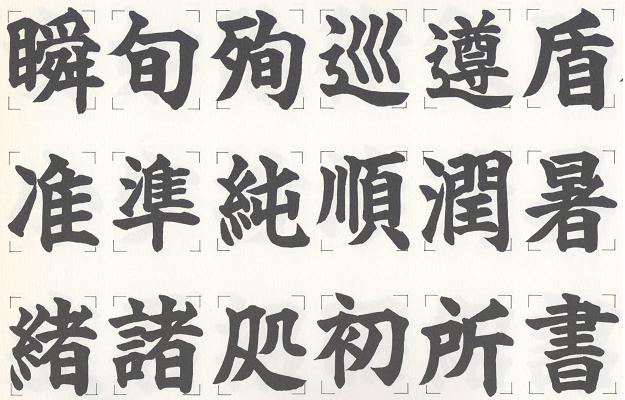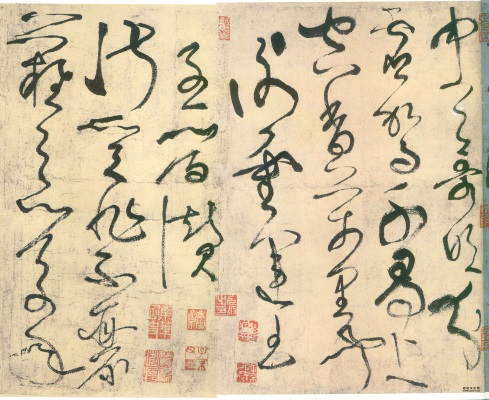
showing kaisho on the left
and gyōsho on the right.
 |
| Handwritten Japanese characters, showing kaisho on the left and gyōsho on the right. |
|---|
These are also known as mōhitsushotai (毛筆書体), or "brush" styles. Japanese calligraphy is known as shodō (書道) or just sho (書).
 |
| Kaisho (楷書) or block characters |
|---|
Kaishotai (楷書体) is the most traditional square style of characters. Horizontal lines slanting upwards going from left to right. The kai in kaisho means "regular". This is the type of handwriting taught to Japanese schoolchildren at elementary school. See also How is Japanese writing taught to Japanese children?
 |
| Gyōsho (行書) or semi-cursive |
|---|
Gyōshotai (行書体), so-called "semi-cursive", is a flowing style of writing.
 |
| Sōsho or cursive calligraphy by Zhang Xu, a Chinese calligrapher. |
|---|
Sōsho (草書) is an even more flowing style than gyōsho , with each character often expressed by a single curving brushstroke. This style was the basis for the origin of hiragana. See How did katakana and hiragana originate? Characters written in this style may be impossible to read without special training.
Copyright © 1994-2025 Ben Bullock
If you have questions, corrections, or comments, please contact Ben Bullock or use the discussion forum / Privacy policy

|

|

|

|

|
| Book reviews |
Convert Japanese numbers |
Handwritten kanji recognition |
Stroke order diagrams |
Convert Japanese units |